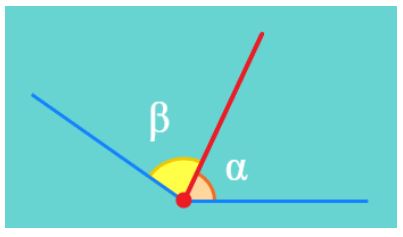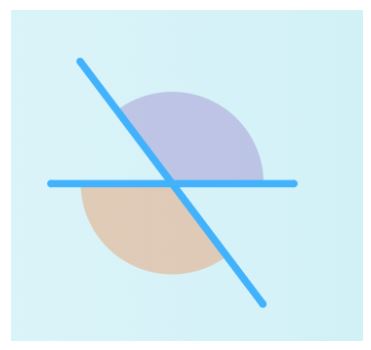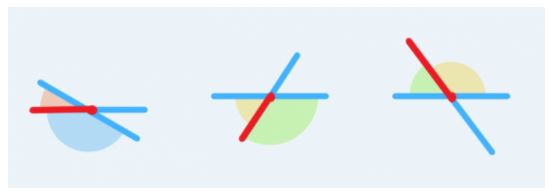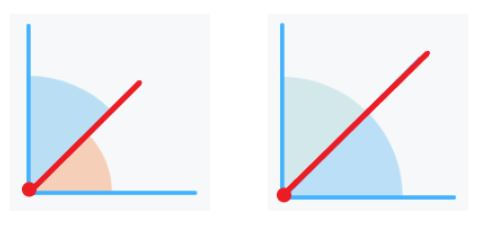In this post, we are going to discover what consecutive interior angles are and how to differentiate them from other types of angles. You will see some examples and even a little quiz.
But before we start, let’s review what an angle is. An angle is the portion of a plane between two rays that are joined by a vertex.
If you would like to look into the definition of an angle more or review the types of angles, we recommend reading this post from our blog: Introduction to Angles.
Index
What are Consecutive Interior Angles?
I’m sure that the word consecutive rings a bell. According to Merriam-Webster, consecutive means ‘following one after the other in order.’
In this case, since we are talking about angles, we can say that a consecutive angle is one that follows another. But…this definition should be improved by taking into account that consecutive angles share a vertex and one of their sides.
What do we mean when we say they have a common vertex? Easy, it means that both angles start from the same point.
We’ll be able to see it more easily with the help of some pictures.
Consecutive Angles
The alpha (orange) and beta (yellow) angles are consecutive because they share the vertex and a side.

The red side is shared by both angles.
Non-consecutive Angles
The purple and orange angles are not consecutive because, while they share a vertex, they do not have a side in common.

In other words, these angles are not consecutive because they only share the vertex, they do not share a side.
Properties of Consecutive Interior Angles
- They share the same vertex.
- They have one of their sides in common.
When are Two Angles Consecutive?
Two angles are consecutive when they have the same vertex and share a side.
- If one of these properties is not fulfilled, then the angles are not consecutive.
- If both properties are fulfilled, then they are consecutive.
Consecutive Interior Angles Examples
Supplementary
These are three examples of consecutive angles that are also supplementary angles because they measure 180 degrees.

Complementary
There are also consecutive angles that are complementary because they measure 90 degrees.

Video: Consecutive Angles Tutorial
How about we see an example of a consecutive angle in everyday life?
Below, you can watch a video tutorial from Smartick about the relationships between angles.
Eva and Zoe are choosing different decorations for the wheels on their bicycles. With the help of this tutorial, you will learn the different relationships between angles according to their measurement and amplitude (complementary, supplementary, opposite, consecutive, and adjacent angles).
There is an example of consecutive angles included in the video.
If you would like to access our interactive tutorials, register with Smartick! The online math method for children ages 4 to 14 to learn and practice math independently. You’ll find interactive tutorials about angles, as well as many other primary school math topics, and exercises adapted to your child’s level. Take advantage of the free trial period!
Show What You Have Learned With Various Exercises
Are you able to identify a consecutive angle? Look closely at the shared angles.
You should think about whether or not these three images are consecutive angles or not.

Solutions
Image 1: They are not consecutive.
In this case, the angles are not consecutive because they do not have a side in common, so they are opposite angles.
Image 2: They are not consecutive.
In this case, the angles are not consecutive because they do not have a side in common, so they are opposite angles.
Image 3: They are consecutive.
In this case, they are consecutive angles because they share an angle and they have a side in common. Furthermore, they are supplementary angles because together they measure 180 degrees.
With Smartick you can practice and learn primary mathematics during 15-minute daily sessions. After you complete the session you can go to the Virtual World to compete with other children in Smartick, customize your avatar, and many more things that you can discover once you enter! Register with Smartick today!
Learn More:
- Complementary Angles: What Are They?
- What is a Straight Angle and Examples
- What is an Obtuse Angle?
- Learn about Angles: Obtuse, Straight, Right and Acute Angle
- What Is an Angle? How Is It Made?







